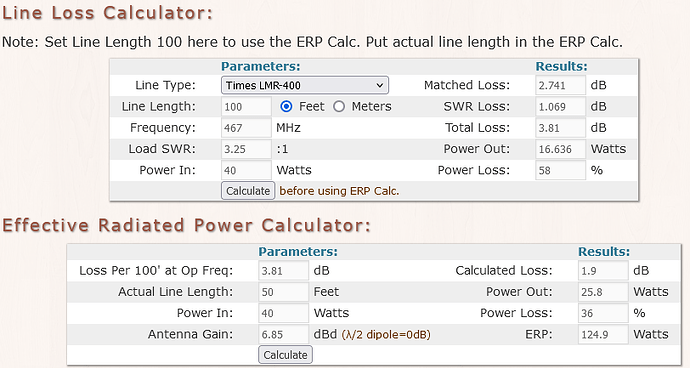I think the issue is that you have fallen into the trap of quoting readings that have more decimal points than your equipment can probably measure. I’ve got 3 meters I use, and none of them read accurately. They give good indications, but they are not linear. The VSWR changes when I switch to higher powers, and it shouldn’t. 2.1 is better than 2.5 but my guess is that 2.5 is probably not 2.5 at all - but maybe 2.3 or 2.8? I had years ago an old Bird meter, and a few of the slugs. I regret selling it. The Thruline meters use the same components for forward and reverse measurements by rotating the slug 180 degrees - so the same measurement device with whatever deficiencies it has get used for both measurements, nulling them out. Other devices use two different rectifiers, so they can get out of alignment with each other. The usual problems with output stages with less than ideal VSWR is a balance of Power and the capability to deal with substantial power being reflected. Manufacturers never reveal the liklihood of reverse power damaging the output stage because it relates to time. Somebody who does short overs, or longer ones with longer gaps will be safer than somebody who presses the PTT and releases it ten minutes later. It’s so variable. I know that my own operating style is different on different bands. I chat for longer on ham bands, but much shorter transmissions on marine band. Business band, a bit further away still is probably the comms with the shortest transmissions. One of my antennas has very low VSWR on the ham bands. It rises to about 2.5 on the top end of marine and is over 3 at 169. No radio I have used over maybe 4 years on it has ever had a problem. However there is also a snag. As the VSWR rises, the antenna performs substantially worse, and the gain at 145MHz is pretty good. At 169MHz, I suspect the gain is less than a dipole. I wonder if the figures you have for those two antennas are correct? All the specs are for the resonant frequency are they not? When you say worst case VSWR, those losses will also increase, and the published gain figure will disappear? Very often I stick new antennas on an analyser and spot all kinds of strange peaks and troughs in the performance. A resonance at an unexpected frequency usually correlates with a similar dip in VSWR. Sometimes, my excitement that an antenna will be useful at that frequency just doesn’t work. I have a quad band antenns - 28/50/145/430, and discovered a nice dip at just over 70MHz - VSWR there was indicating under 2:1. It performed really poorly. A nice indicated match, good VSWR and a rubbish antenna. With higher output powers I also wonder if the VSWR is impacted by a measurable second harmonic - maths wise as they are related they should mirror each other, but I think they may not - so is my 2:1 reading really 2:1 at the transmit frequency, or is the reflected power at double the frequency messing the reading.
This, I think, is why nobody is willing to give you a firm opinion. 2.097dB is just 2dB - never describe with accuracy, something you cannot validate. I can tell you what I am happy with. 10W or less output power and I’d not worry about a 3:1 VSWR. Raise that to 25W, and I think my limit would be 2.5? I have a few rated at 65W and for me … 2:1 seems where experience makes me comfy. Not scientific, not evidenced by science. My experience tells me that at 3:1, it really means the antenna is going to be a poretty poor performer. Too long or too short, but 3:1 indicate a non-resonant antenna, so all published date is wrong. How much wrong varies between designs. A ¼ wave vertical on a decent ground plane has no gain, but a wide bandwidth. The bandwidth of the Comet is much tighter, and shift too far from the design frequency and it turns into a bit of metal in the sky. Height and decent feeder help of course, but switching to a resonant one ups signal level. On my 3 antenna mast on the office - the ham band antenna has 3dB of gain - but on marine, switching to the dedicated marine antenna with no gain, gives a just perceptable increase - I guess around 2dB better in listening terms. 12MHz up from 2m, and the 3dB gain has gone. VSWR is higher so that’s transmit power reduced too. I tend to use the ham band one on marine, because I only need local, and the radio is happy with the higher VSWR.
Your question just sort of asks for things people cannot answer, and they probably view your specifications with confusion. I can’t (for example) see where 80.4 Watts comes from? Or the 29%-11.6W bit? 40W output as RMS Watts is OK but matched loss, SWR loss and total loss confuse me - where do these figures come from, and at what frequency? You only want to know about 2.5 to 3 as a ratio? Sorry, but I am lost. So many specs and data statements but they make no sense to me as they don’t relate.
If you plot VSWR at gradually increasing frequency - you might get a far from straight line. Something causes it. non-lineality in the measuring circuit, odd new resonances impacting, and non-linear reduction in the gain, possibly with power throttle back as VSWR rises? I do not know how to isolate and measure this kind of thing. I do know that my meters, analyser with a bridge and a cheap network analyser all give me different readings and I cannot say which, if any, are telling the truth.


